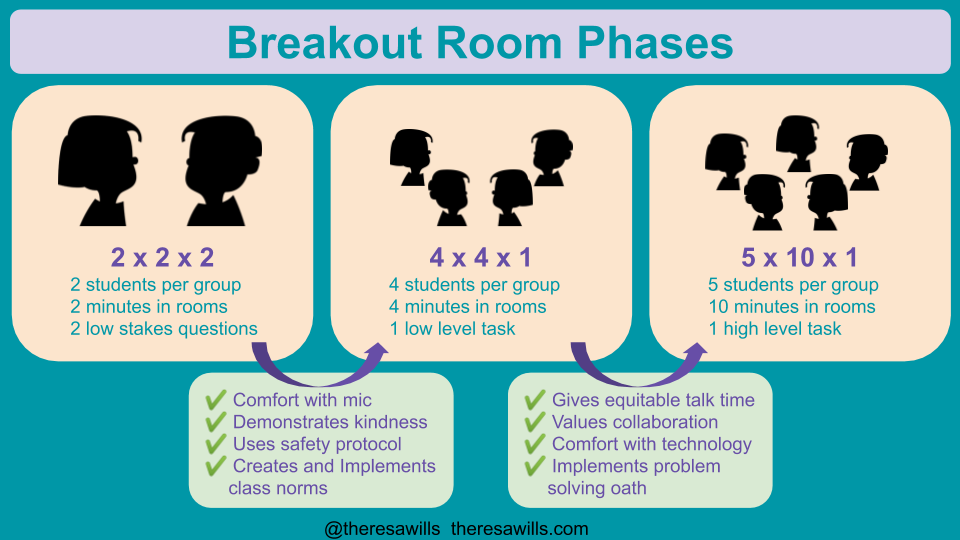by Leticia M. Trower
Even for teachers who are typically superstars at promoting student interaction, getting kids talking, and engaging students in learning, those things can be difficult to do during a virtual lesson. Parents I’ve talked to describe long, awkward silences as their child stares silently at an equally silent screen, punctuated only by a teacher’s occasional prompts of “Anyone?” Here are a few ideas to get students engaged in virtual interaction:
- Start Safe: Start with no-risk or low-risk questions, like “cats or dogs?” Remember, your goal at first is just to get kids used to the new routine and get them comfortable talking. Once you’ve met that goal, you can work on getting your students to engage in academic discourse about their learning.
- Small to Large: Have students talk in small groups first, then share out in the whole group afterwards. A gradual release model works best for this. Students won’t automatically start talking in the small groups either! Provide them with a structure that encourages each student to contribute at least one thing to the conversation, then have them choose one of those things to share in the whole group. Once the whole class reconvenes, call on one student from each group randomly; this requires students to talk in their small groups in order to make sure everyone knows what they plan to share. (You can start safe with this idea too, and have students discuss something fun the first time, moving into more academic topics as they get used to the new routine).
- Chat Blast: Ask a question, and have everyone type their answer in the chat box but NOT hit “enter.” Let students know you expect 100% participation! Then, on your cue, everyone hits “enter” at the same time.
- Quick Draw: At random points in the lesson, give students 30 seconds to draw a visual representation of something the class is discussing, then show it to the camera. Call on volunteers to describe what they drew.
- Tech Tools: Use a tech tool like Pear Deck, Poll Everywhere, Nearpod, Kami, Google Jamboard, or Padlet to keep kids engaged. Find out which tech tools your district supports, or turn to your professional network (within the district or on social media) to find out what’s working well for others. Don’t use a tool just because it’s fun – always start with your learning goals.
- Be Honest: Acknowledge that talking to a screen can feel awkward. Let your students know about how you’re feeling, too! The most successful virtual lessons I’ve seen so far are the ones that include the teacher as a learner, partnering with their students in this strange new world of school.
- Use the Chat: Encourage students to type comments or questions in the chat, then use positive language like “Priyanka, I love what you wrote! Would you be willing to unmute and tell us more about that idea?” to invite students to speak to the whole class.
- Be Patient: Even as adults, we need time to listen to a question, think of an answer, type it in the chat box, and hit “enter.” Students need even more time. Sometimes, another 30 seconds of wait time may be all you need.
- Be Flexible: If you have a student who never turns their camera on or unmutes themselves to speak in class, look to other ways to gauge their engagement in class. Do they complete their assignments on time? Do they email you when they have questions? Have they contributed an equal share to group projects? Does their work demonstrate mastery of the content? If so, perhaps they don’t actually need to be engaged in traditional classroom interaction during virtual learning.
Here’s another idea, posted to Twitter by Theresa Wills: Breakout Room Phases

References:
Wills, T. [@theresawills]. (2020, August 14). One does not simply create breakout groups, there is a sequence of gradual release when students show mastery and responsibility. [Infographic]. Twitter. https://twitter.com/thersesawills/status/1294242324369858562?s=19